Pigeons and doves are some our most recognisable and easily spotted birds. And although they can look very similar they don’t always receive an equal reception.
Doves are often perceived as pretty symbols of peace, whilst some consider pigeons a bit scruffy in comparison.
Tom Hibbert from The Wildlife Trusts takes a look at the differences between a dove and a pigeon.
What's the difference between a dove and a pigeon?
The names ‘dove’ and ‘pigeon’ can be deceptive. Scientifically speaking, neither of them carry much merit. All the birds we know as either pigeons or doves belong to the same family, Columbidae. This large group of often plump, slender-billed birds encompasses around 350 species, with five regularly found in the UK.
The name dove is usually given to the smaller members of this family. But in taxonomy (the scientific process of naming and classifying living things), there is no real distinction between a dove and a pigeon.
The stock dove is more closely related to the woodpigeon than it is the collared dove or turtle dove, and the feral pigeons in our towns are descended from rock doves. In fact, the birds we know as pigeons may even be called doves in other languages, or vice versa.
Let’s take a look at the doves and pigeons you’re likely to spot in the UK…
Feral pigeon vs rock dove
We’ll start with the most familiar, the feral pigeon. These are the birds you always see flocking in towns and cities, scrabbling after scraps. They’re often grey with a metallic shimmer on their neck, though their markings and colours can vary dramatically.
Feral pigeons are the result of human intervention. We bred them from a wild ancestor, the rock dove. These wild birds were domesticated, likely first as a source of food and later for many other reasons – including carrying messages. Over time, these domesticated descendants have escaped and thrived in urban areas across the world.
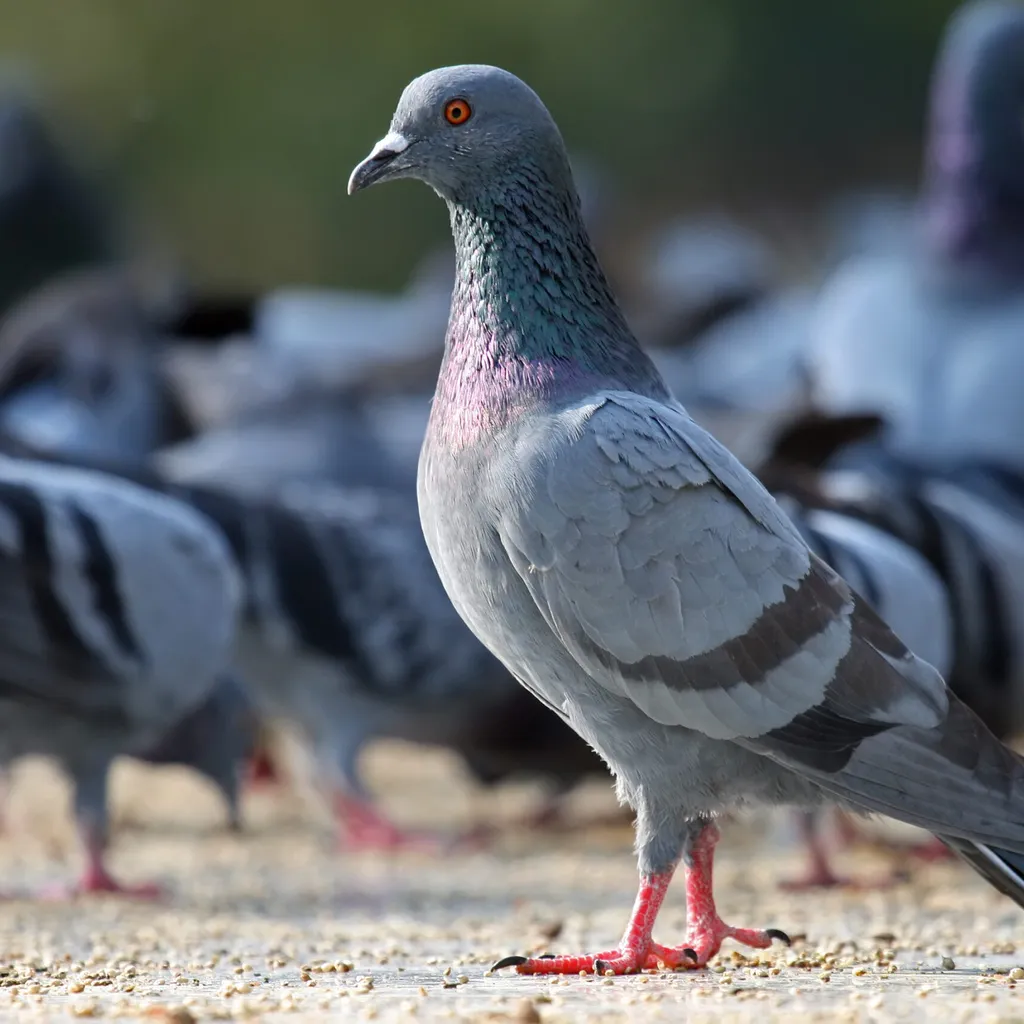
Sadly, the original rock dove has not fared so well. They were once found on coastal cliffs and in mountainous regions across much of Europe, Africa and Asia. However, as feral pigeons became more common, they bred with rock doves and gradually replaced them. Truly wild rock doves can now only be found in isolated populations, often on islands where they rarely meet feral pigeons. In the UK, they still exist in a few remote parts of Scotland and Northern Ireland.
Wild rock doves are virtually indistinguishable from the classic grey version of the feral pigeon. They’re pale grey, with a purple-green metallic flush on the neck. They have two neat black bars across their wings and a white patch on the rump. The similarities have made it tricky to monitor wild rock dove populations, with scientists needing to gather DNA evidence to be certain that populations are genuine.
Woodpigeon vs stock dove
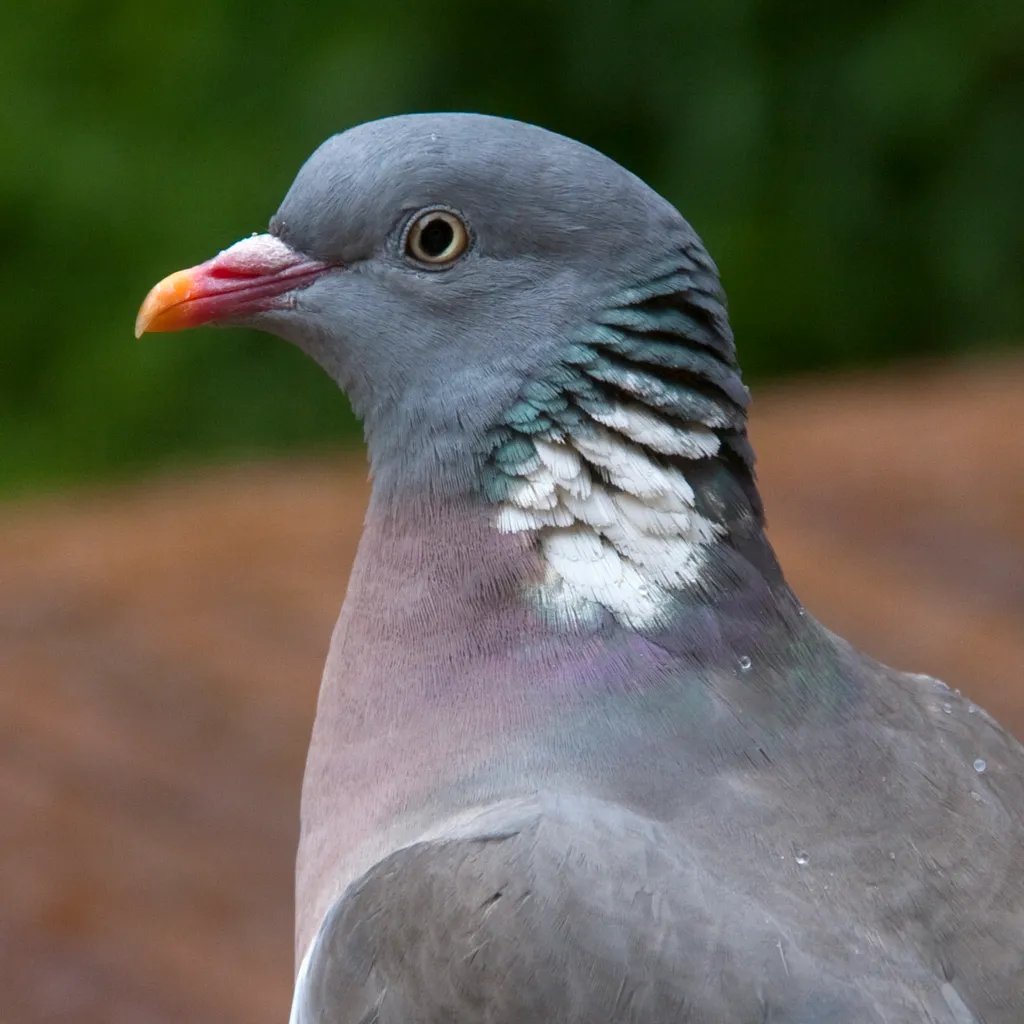
Woodpigeons are a common sight in pretty much any part of the UK, from farmland to urban parks and gardens. They feed on crops as well as seeds, buds, berries and nuts. If you’ve ever put out a birdfeeder, you’ve probably attracted a woodpigeon or two!
They’re plump birds – our largest pigeon, around 40cm long and often weighing over 500 grams. Adults are grey with a vinous wash to the breast and a blue-grey head. One of their most distinctive features is an obvious white patch on each side of the neck. They have a yellow eye and a red and yellow beak.
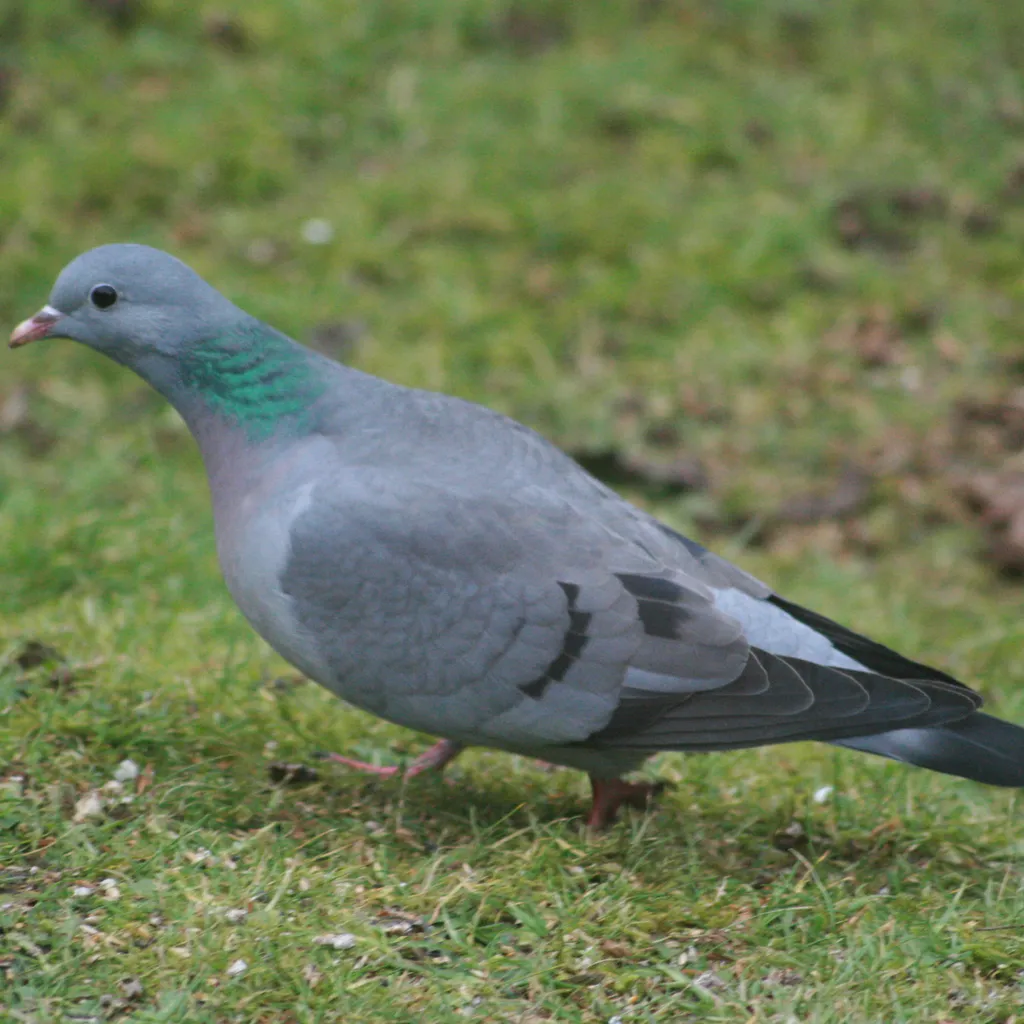
If you’re not paying close attention to your pigeons, stock doves can easily go unnoticed. They’re similar to a woodpigeon, but smaller and with a more even, blue-grey plumage. They also have large, dark eyes that give them a cuter appearance. However, the most obvious difference is the lack of any white on their neck; stock doves just have a beautiful, shimmering green patch.
They’re often found on farmland, but also in parks and woodland. Scan through flocks of pigeons feeding on the floor and you might find a stock dove amongst them. They nest in tree holes, so also spend some time in the tops of tall trees. Cosy cavities can be hard to find, which sometimes brings them into conflict with jackdaws, owls and other birds that nest in holes.
What is a turtle dove?
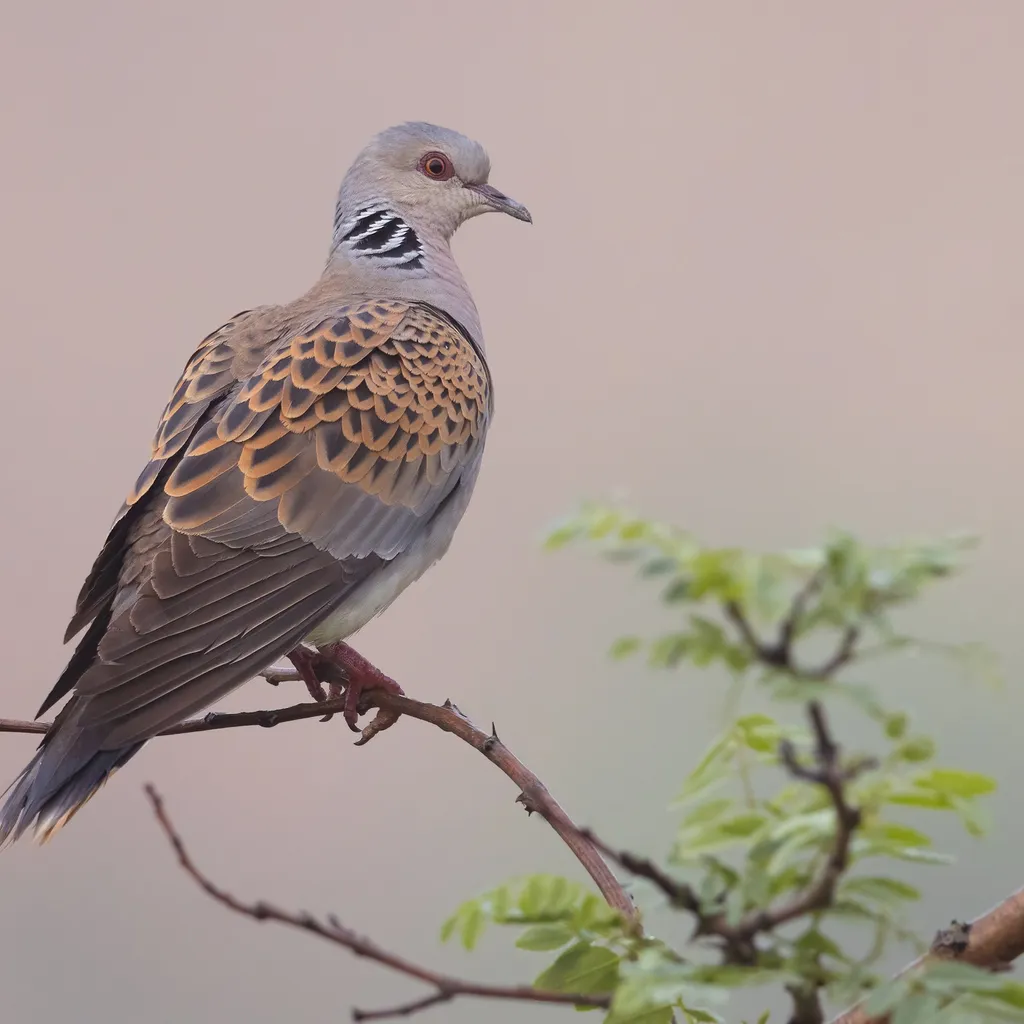
Thanks to the Christmas song '12 Days of Christmas', most people have heard of a turtle dove – but sadly few have seen one. They have the unenviable title of the UK’s fastest declining bird. Their numbers fell by 98% between 1970 and 2018.
Turtle doves are migratory, spending the summer here in open countryside and flying to West Africa for the winter. They face many threats, from the loss of suitable habitat at nesting and wintering sites, to hunting on migration. The priority in the UK is making sure they can find plenty of food and suitable nest sites. As these are often found on farmland, encouraging and supporting wildlife-friendly farming is vital to their recovery.
Turtle doves are small and slim, about two thirds the length of a woodpigeon. They are beautifully patterned, with a pink breast, rich brown wing feathers with dark centres, and a patch of black and white stripes on each side of the neck. When they take flight, they show a striking black tail with a broad white edge.
What is a collared dove?
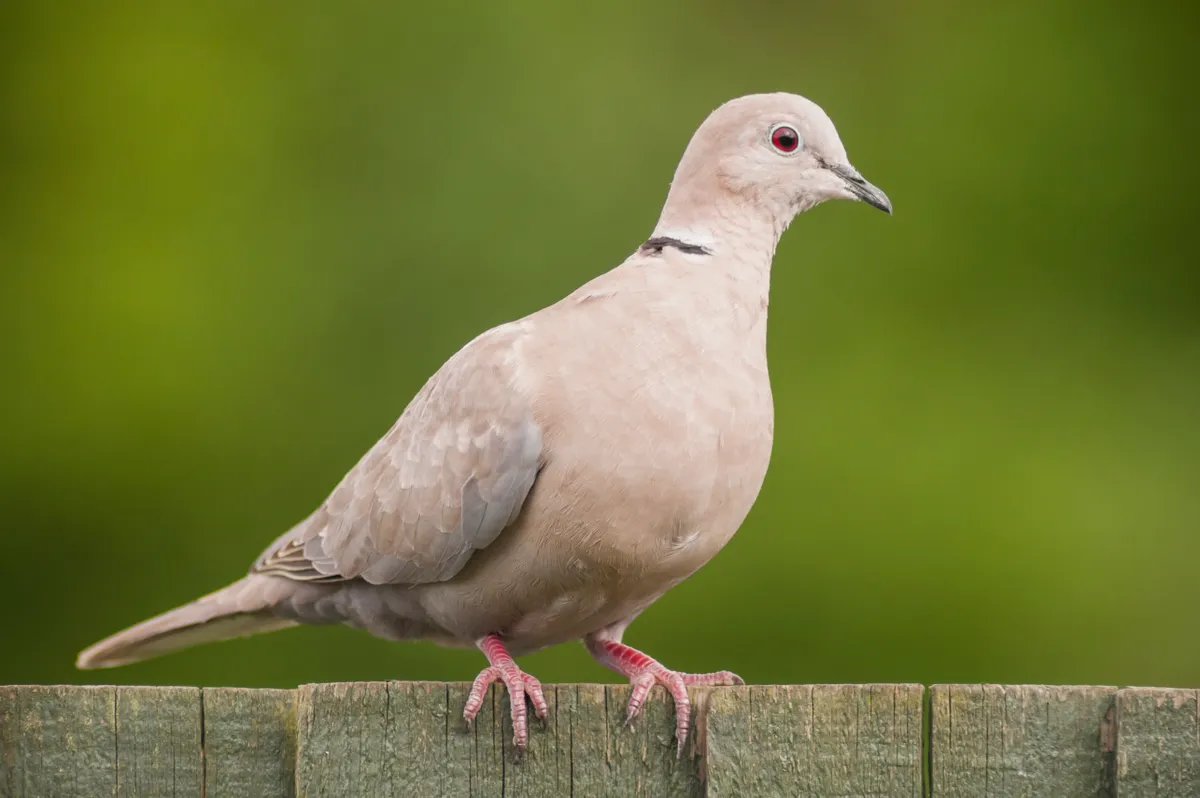
As turtle doves have disappeared, another dove has enjoyed a meteoric rise. Collared doves originated in South Asia but naturally spread west into Europe. They first bred in England in 1955 and have been so successful that they’re now found almost everywhere in the UK and Ireland.
Collared doves are smaller than a woodpigeon, with a pale grey and brown plumage, red eyes and a black half-collar on the back of their neck. They’re a common sight in towns and villages, often perched on rooftops or visiting gardens.
What sounds do doves and pigeons make and how do you tell the difference between them?
Most of our doves and pigeons have cooing songs, which can be heard throughout the year. The woodpigeon usually sings five distinct notes. Adding your own words to a bird’s song can sometimes help it stick in your memory. When you hear a woodpigeon singing, it may sound like it’s saying, ‘good morn-ing… to you’.
The collared dove has a similar song, but it only has three notes, which are often repeated. The second note is drawn out: ‘hoo-hooooo-hoo’. It may sound like the collared dove is giving a more energetic and less formal ‘good morn-ing, good morn-ing’. Others liken it to a football fan chanting ‘u-ni-ted’.
Feral pigeons and rock doves have a rolling, slightly rumbling song, whilst stock doves give out a series of deep, hoot-like coos. Turtle doves famously purr.
More by Tom Hibbert
Heron vs egret: what's the difference between these two leggy, long-necked, elegant birds?
Swift or swallow: what's the difference?
Tom Hibbert is a birdwatcher and content officer for The Wildlife Trusts. Follow him on Twitter @TomHibbert54

